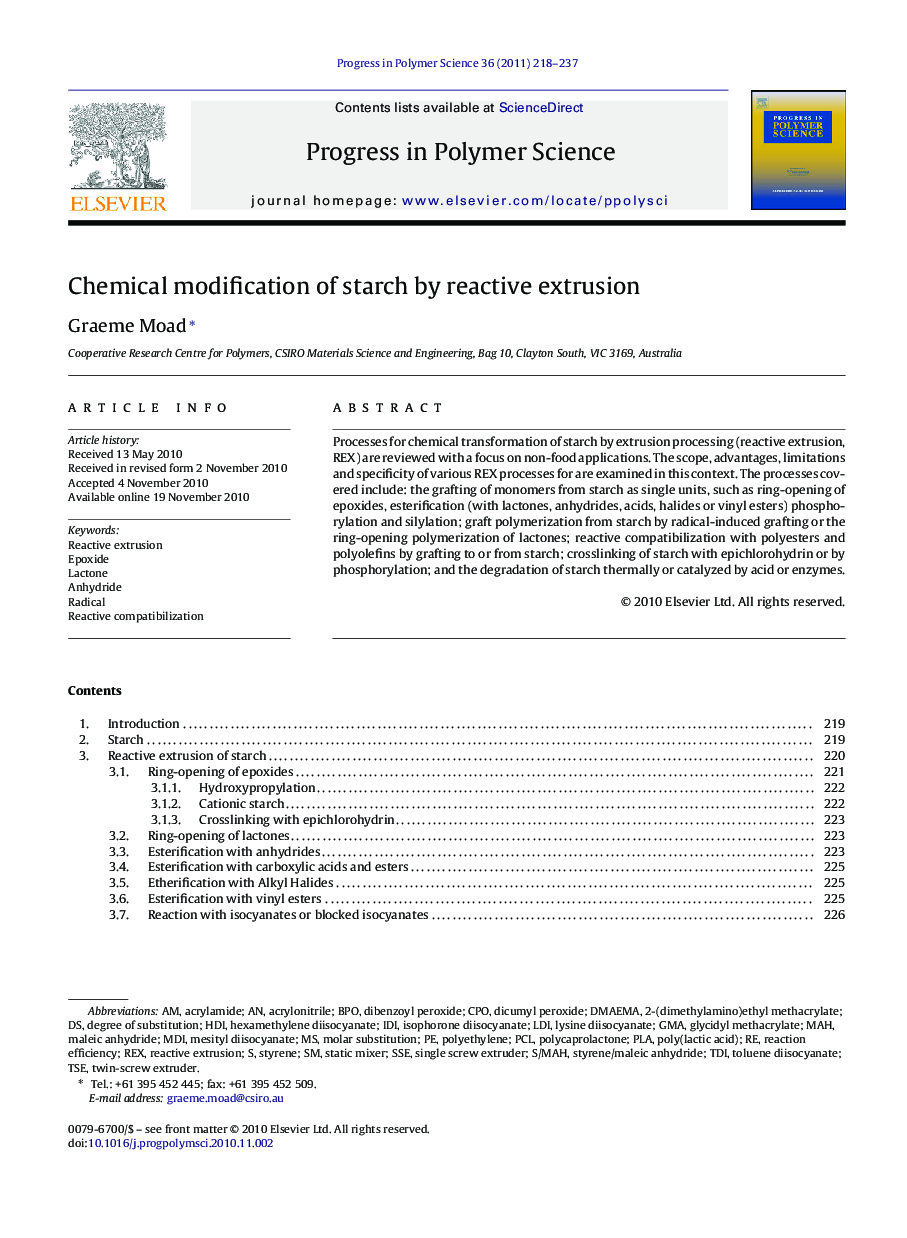| Article ID | Journal | Published Year | Pages | File Type |
|---|---|---|---|---|
| 5208753 | Progress in Polymer Science | 2011 | 20 Pages |
Abstract
Processes for chemical transformation of starch by extrusion processing (reactive extrusion, REX) are reviewed with a focus on non-food applications. The scope, advantages, limitations and specificity of various REX processes for are examined in this context. The processes covered include: the grafting of monomers from starch as single units, such as ring-opening of epoxides, esterification (with lactones, anhydrides, acids, halides or vinyl esters) phosphorylation and silylation; graft polymerization from starch by radical-induced grafting or the ring-opening polymerization of lactones; reactive compatibilization with polyesters and polyolefins by grafting to or from starch; crosslinking of starch with epichlorohydrin or by phosphorylation; and the degradation of starch thermally or catalyzed by acid or enzymes.
Keywords
MDIDibenzoyl peroxidehexamethylene diisocyanateBPODMAEMAMAHIDIGMAHDILDITSETDISSEPCLPLACPO2-(Dimethylamino)ethyl methacrylateAcrylamideStyreneRadicalAnhydrideEpoxideAcrylonitrileSingle screw extruderTwin-screw extruderReactive extrusionisophorone diisocyanatetoluene diisocyanateMolar substitutionDegree of substitutionDicumyl peroxideRexReactive compatibilizationLactoneLysine diisocyanateMaleic anhydrideStatic mixerPoly(lactic acid)PolyethylenePolycaprolactoneReaction efficiencyGlycidyl methacrylate
Related Topics
Physical Sciences and Engineering
Chemistry
Organic Chemistry
Authors
Graeme Moad,
